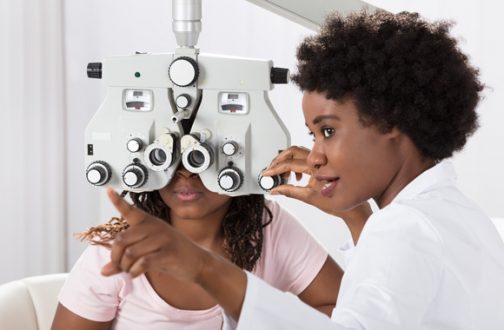The causative agent of various diseases in immunosuppressed and immunocompetent patients is often microsporidia. Ocular microsporidiosis presents as systemic infection or is isolated. According to recent clinical research, ocular microsporidiosis is often diagnosed in immunocompetent individuals.
Traumatic inoculation or contamination of soil and water causes the infection leading to Microsporidial keratitis. Microsporidia can exhibit diverse clinical manifestations which include intestinal, ocular, pulmonary, renal, and muscular disorders.
Scleritis, keratoconjunctivitis, stroma keratitis, endophthalmitis are the common infections caused due to microsporidia. Human ocular infections are linked with seven different genera. The best diagnostic method to diagnose Microsporidial Keratitis is electron microscopy. The morphological demonstration of microsporidia plays a major role in the diagnosis of this condition.
Ocular keratitis has two main types which include; stromal keratitis, which is commonly found in immunosuppressed individuals, and keratoconjunctivitis, most common in immunocompromised patients.
The ocular cases of AIDS patients are different from the immunocompetent individuals. Microsporidia infect their host in a specific way in vitro. This process includes activation of spores and polar tube discharge.
Microsporidia Keratitis Symptoms
This type of infection presents as corneal stromal keratitis, the main infectious organism, in this case, is Nosema Corneum, or superficial keratoconjunctivitis. It is common in contact lens wearers and AIDS patients. The main causative organism is Encephalitozoon.
In healthy persons, Microsporidia Keratitis mimics herpetic keratitis. These patients have a history of photophobia, watering, pain, recurrent redness, and decreased vision. Mostly these cases are misdiagnosed and they get treated with topical steroids and antivirals. This cannot manage or treat the symptoms of Microsporidial Keratitis.
The common symptoms experienced by the individuals facing Microsporidial Keratitis are congested conjunctiva, corneal lesions, and lid edema. The stromal infiltrates are mid to deep in the cornea surrounded by edema. The epithelium is either intact or disrupted with stromal lesions. There is no sign of precipitates in the endothelium.
The duration of symptoms usually ranges from one month to two years. People start complaining about the two main symptoms: pain and redness.
Light microscopy or electron microscopy are commonly used to detect microsporidia. Conjunctival scrapings can provide the necessary specimen to carry out the clinical test for diagnosis. These organisms are small and oval which appear with stromal keratocytes, histiocytes, and epithelial cells.
Microsporidia Causes
Various risk factors are responsible for Microsporidia Keratitis. Immunocompetent patients mostly suffer from this condition. The predisposing factors which have been observed in these patients are exposed to contaminated water by mud or soil. Dirty water is an important factor to consider while diagnosing this condition.
Moreover, the spores are not inactivated by chlorination, so drinking water can act as a breeding ground or storage of microsporidia. According to the latest clinical research, the high prevalence of Microsporidia Keratitis is in the monsoon season. India is one of the countries which have cases of Microsporidia on rainy days especially.
Dust particles, trauma, insect bites, contact lens, bathing in contaminated or unclean water, and LASIK surgery are also the predominant causes. Furthermore, hot springs exposure is also a major cause. Sometimes, localized immunosuppression is caused by topical steroid therapy, which can be a risk factor as well. Donor corneal graft can also act as a mode of transmission in Microsporidial Keratoconjunctivitis.
Microsporidia Keratitis Treatment
Chronic Microsporidia Keratitis has no definitive treatment. Superficial Microsporidia Keratitis can be treated by 0.1% propamidine isethionate or systemic Itraconazole. Debulking and topical combinations of drugs like neomycin, bacitracin antibiotics, and polymyxin B have proven to be effective with oral administration of Itraconazole.
Topical fumagillin has also reportedly treated many cases of keratitis effectively. Fumagillin is a natural secreted antibiotic and inhibits the effect of some intestinal protozoa. The commercial product quite often used is Fumagillin cyclohexylammonium salt. Although the mechanism of action of this drug is not known, it inhibits RNA synthesis and alters DNA.
Topical fumagillin is more effective when it is prescribed with oral albendazole. However, in selected cases topical chlorhexidine and systemic albendazole have shown good response in these patients, where the condition is related to mid-stroma.
The deeper penetration of the organisms may require corneal scrapings, bandage contact lens, and topical steroids. Lamiller graft is not recommended even if the medical treatment fails. Instead, PKP is recommended to treat Microsporidia Keratitis. This will reduce the chances of recurrence in the lamella.
For visual rehabilitation, anterior lamellar keratoplasty is often considered. The treatment options for Microsporidia Keratitis are still being researched and updated continuously.
 Health & Care Information
Health & Care Information 


